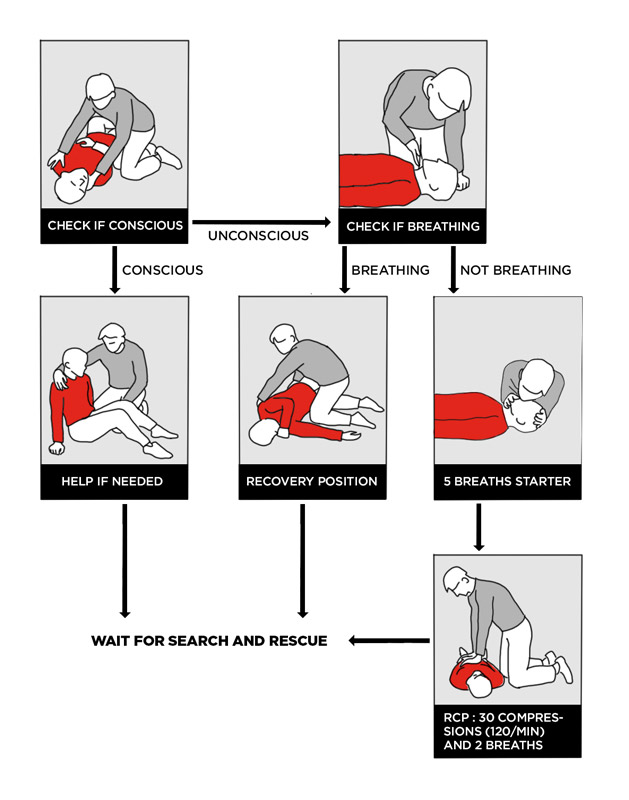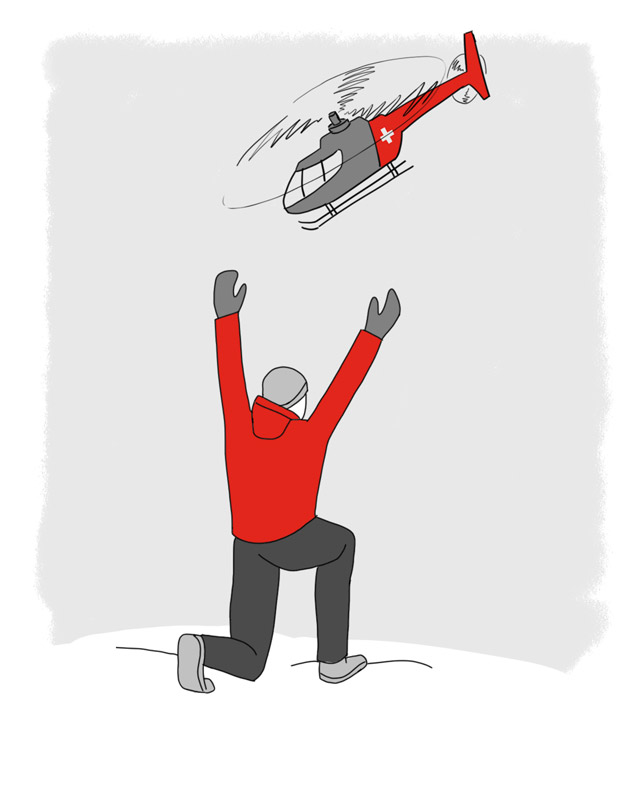THE RESCUE: FIRST AID
AFTER DIGGING OUT SOMEONE BURIED IN AN AVALANCHE, THEY MAY BE INJURED, HYPOTHERMIC, OR NO LONGER BREATHING. YOU NEED TO ADMINISTER FIRST AID WHILE WAITING FOR SEARCH AND RESCUE TO ARRIVE.

- • Access all respiratory pathways.
- • Check to see if the respiratory pathways are obstructed. If obstructed, clear any snow (or other obstructions) out of the respiratory pathway(s).
- • Check if the victim is conscious: do they respond when calling them? If the victim is conscious, keep them warm, keep a close eye on them, and ask them questions regularly to make sure they stay conscious.
- • EIf the victim is unconscious: check their pulse and if they are breathing. If the victim is unconscious but breathing, place them in the recovery position, keep them warm, and keep a close eye on them.
- • If the victim is unconscious and not breathing: start CPR. Continue to administer CPR until the victim starts breathing again or when search and rescue can take over and the doctor decides what to do.
The vast majority of professional rescues are carried out by helicopter. The area surrounding the victim must be analyzed to inform the rescue mission of any possible obstacles (power lines, ski lifts, trees, etc.)
Items such as skis, bags, and clothing must be kept away from the landing area and lying flat. Receiving the helicopter is done with your back to the wind and arms raised to form a “Y”. This is the international distress signal meaning “Yes.” The person will remain crouched down and still for the entirety of the landing. This acts the ground reference point for the pilot. Once the professional rescue workers have arrived, the rescue leader must take account of the situation. The people on the scene must then make themselves available to the rescue workers and comply with their instructions.
